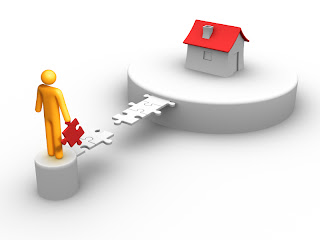New home sales have come off a first quarter downward spiral to show the sales slump may have bottomed.
HIA economist, Dr Harley Dale said an April lift in new home sales of both detached houses and
multi-units was an imperative result.
According to the HIA the problem looms
"Even with this latest improvement, the aggregate volume of both new home sales and local
government building approvals imply that in the absence of a rapid and sustained recovery, national
new home building is heading to a recessionary level in 2012,” said Harley Dale.
This solution is what I can't agree with
“That’s an unfortunate fact which everybody needs to face and which requires further interest rate cuts
and immediate government action,” Harley Dale said.
What's wrong with this statement
- Nothing new here. We have heard same old song for 12 years. Give us an unfair advantage and give each customer a tax payer funded slush fund, and we'll build those houses for Australia.
- It will ease the pain, but does not solve the problem.
What about Retailing? What about manufacturing?
Retailing and manufacturing are much bigger employers, and both have serious problems right now. Do they ask the Government for tax payer funded handouts for their customers?
Yet the building industry has had the lowest interest rates in history, and been supported by Government handouts to their customers, directly or indirectly, for 12 years.
And they are stilling singing the same song?
Last time I checked low interest rates and tax payer funded handouts were not working for you, so why keep asking for things that do not work, and in the end a worse problem for your next customers? In other words. The housing industry has proven that tax handouts reduces demand.
So why did it not work?
Well it did, but them everybody sucked the goodness out of the situation,
and now we have people wanting homes the can't afford. So who sold them on that?
People don't want postage stamp blocks where you have to have a two story home. Who wants that?
They cost $20,000 more to build, have less usable space, are a health hazard,and have countless issues that will unfold down the track.
Clearly the HIA have never presented a solution to the problem.
I believe because they Have looked in the wrong places.
Its the cost of land Dummy
If land were half the price more people would build a new home. If interest rates were 12% that would not stop them, because it would still be affordable.
What the HIA can't see, is that selling homes that go on postage stamp blocks in Sardine City is not the Australian Dream.
Selling what State Governments and land developers want sell but people resist buying is no way to run a business.
Creating an abundance of cheap residential land with block sizes that people want is the way to go.
My Story
I planned to build a home two years after this one I am in, and then five years after, but never did. Why not? But the land prices were too high and the blocks were ordinary, and the streets were too skinny.
So what chance have you ever got of selling me a new home? Buckley's. Even though I want to build.
State Government and Federal Government grants only make things worse. they actually make homes unaffordable down the line and create a worse situation.
Sure if you wave money at people some will drop their pants. But the ones that don't won't when the grants are gone. They want more for waiting.
The HIA solution? More grants, bigger grants. Its pathetic.
What's needed is less whinging, less begging, and more working on the problem. The problem is the price & availability of cheaper land, and keeping homes single level.
Source: Mr Mortgage

